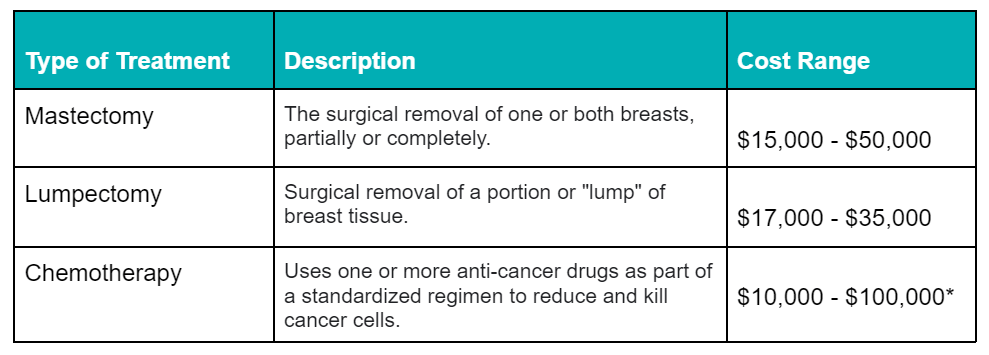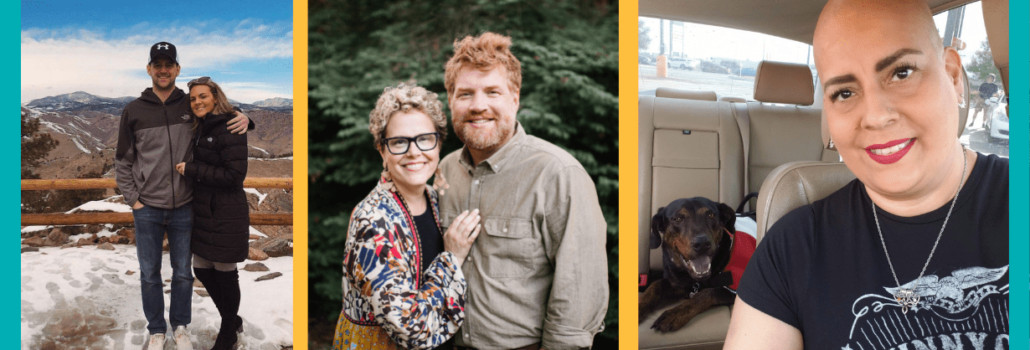
MobilityWorks
Accessibility for all: Helping people connect with who and what matters most
Searching...
No results found. Please try modifying your search.
Need financial help for breast cancer? Trust Help Hope Live for fundraising.
Did you know that, on average, breast cancer has the highest treatment cost of any cancer? Nationally, the total cost for breast cancer care is over $16.5 billion. Finding financial assistance for breast cancer is often an additional burden that comes with the physical and emotional challenges of this diagnosis.
Breast cancer is a complex disease that can develop in various forms with different characteristics and treatment options. The most common types of breast cancer include ductal carcinoma in situ, invasive ductal carcinoma, invasive lobular carcinoma, inflammatory breast cancer, and triple-negative breast cancer.
Some breast cancer treatments may be covered by insurance–but before health insurance, a mastectomy can cost between $15,000 and $50,000. A lumpectomy followed by radiation can range from $17,000 to $35,000. Chemotherapy costs can total $10,000 – $100,000 depending on the number of treatments, method of administration, and selection of drugs.

*The cost of chemotherapy can vary greatly depending on the regimens. Regimens using biologics (types of regimens extracted from, or semi-synthesized from biological sources) often have higher mean costs than regimens not using biologics.
There are several different types of breast cancer in women. The specifics of the tumor makeup impact how the cancer is treated. For example, the location where the cancer began, i.e., milk ducts, connective tissues, or milk-producing lobules, provides a strong indication of the type of cancer the patient may be experiencing.
The main breast cancer types include:
Local Treatments – Surgery and radiation are both considered local treatments that treat the tumor without affecting the rest of the body. Most patients will undergo surgery to remove the tumor physically. After this happens, the patient’s cancer team will determine if there should be a radiation follow-up.
Systemic Treatments – Also called drug therapies, these therapies can reach a tumor anywhere in the body. A patient takes them by mouth, through injection into the muscle, or directly into the bloodstream. Depending on the type of cancer, drug therapy may include:
Patients typically weigh all their treatment options, including the effectiveness vs. possible risks or side effects, before undergoing breast cancer treatment.
Breast cancer medical expenses associated with breast cancer procedures, rehabilitation funding for therapy, and long-term health care costs will vary depending on the situation. However, regardless of the specifics, the expenses can add up quickly for patients and their families.
Help Hope Live is your community-based fundraising source to assist with the unmet medical expenses and related costs that can result from living with breast cancer.
Through community-based fundraising, our nonprofit organization is dedicated to helping you raise funds for the medical expenses associated with surgery or ongoing support for breast cancer.
The fundraising process with our nonprofit starts with a few simple steps:
Help Hope Live differs from GoFundMe by:
We are a nonprofit organization with more than four decades of fundraising experience and a 4-star Charity Navigator rating.
Here are some Help Hope Live medical fundraising success stories:

According to a 2020 survey of Help Hope Live clients, working with the nonprofit for medical fundraising is “a life changer: less worries, which optimizes health”. Over 94% of our client would recommend our nonprofit to another patient.
In 2020, mother of three Carmel Longoria learned that her cancer was no longer in remission. Carmel found herself unable to work while she juggled not only chemotherapy but also medical-related travel to maintain her treatment. That’s when Carmel’s loving community turned to Help Hope Live, raising over $12,800 in just seven months.
If you choose to fundraise with our nonprofit, here’s how the process will look:
1. APPLY for assistance
2. YOU’LL BE PAIRED with a Client Services Coordinator
3. YOUR COORDINATOR will provide you with one-on-one fundraising help, including personalized fundraising materials and guidance on how to rally your community, share your story on social media, reach out to the press, plan in-person or virtual fundraising events, and more.
Need Other Financial Help Options?
For alternatives to fundraising, you can find information on a variety of cancer financial assistance options. Please view our Catastrophic Illness Resource Directory for insight into sources of direct financial aid, support groups, and other resources for cancer patients and their families.